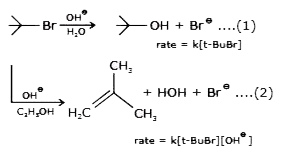If a probe is made of radioactively labelled dsDNA and is allowed to hybridise to its complementary DNA in a cloned cell followed by detection using autoradiography. Which of the following is considered wrong for the given statements?
It is double stranded DNA
It is radioactively labelled
This probe can be used in autoradiography
It is hybridise to complementary DNA/RNA
The correct Answer is:A
To solve the question regarding the use of a radioactively labeled double-stranded DNA (dsDNA) probe and its hybridization with complementary DNA in a cloned cell, we can follow these steps:
1. Understanding the Probe:
- The question states that we have a probe made of radioactively labeled dsDNA. This means that the DNA probe has two strands and is labeled with a radioactive isotope for detection purposes.
2. Hybridization Process:
- Hybridization refers to the process where the probe binds to its complementary DNA or RNA sequence. For hybridization to occur effectively, the probe must be able to form hydrogen bonds with the complementary strands.
3. Nature of the Probe:
- It is important to note that probes used in hybridization are typically single-stranded. A single-stranded DNA probe can easily bind to a complementary strand by forming hydrogen bonds.
4. Analyzing the Statements:
- The first statement claims that the probe is double-stranded. This is correct as per the question.
- The second statement mentions that the probe is radioactively labeled, which is also correct.
- The third statement indicates that the probe can be used in autoradiography, which is true since the radioactive label allows for detection.
- The fourth statement claims that the probe hybridizes to complementary DNA and RNA. This is incorrect because a double-stranded probe cannot hybridize with complementary strands; it must be single-stranded to do so.
5. Conclusion:
- The statement that is considered wrong is the last one, which suggests that the double-stranded probe can hybridize with complementary DNA and RNA. This is not possible because a double-stranded probe cannot effectively hybridize.
Final Answer:
The statement that is considered wrong is: "It is hybridized to complementary DNA and RNA."
---
- The question states that we have a probe made of radioactively labeled dsDNA. This means that the DNA probe has two strands and is labeled with a radioactive isotope for detection purposes.
- Hybridization refers to the process where the probe binds to its complementary DNA or RNA sequence. For hybridization to occur effectively, the probe must be able to form hydrogen bonds with the complementary strands.
- It is important to note that probes used in hybridization are typically single-stranded. A single-stranded DNA probe can easily bind to a complementary strand by forming hydrogen bonds.
- The first statement claims that the probe is double-stranded. This is correct as per the question.
- The second statement mentions that the probe is radioactively labeled, which is also correct.
- The third statement indicates that the probe can be used in autoradiography, which is true since the radioactive label allows for detection.
- The fourth statement claims that the probe hybridizes to complementary DNA and RNA. This is incorrect because a double-stranded probe cannot hybridize with complementary strands; it must be single-stranded to do so.
- The statement that is considered wrong is the last one, which suggests that the double-stranded probe can hybridize with complementary DNA and RNA. This is not possible because a double-stranded probe cannot effectively hybridize.
The statement that is considered wrong is: "It is hybridized to complementary DNA and RNA."
Topper's Solved these Questions
- BIOTECHNOLOGY AND ITS APPLICATIONSBOOK - AAKASH INSTITUTE ENGLISHCHAPTER - BIOTECHNOLOGY AND ITS APPLICATIONSEXERCISE - ASSIGNMENT (SECTION - B) (OBJECIVE TYPE QUESTIONS)
25 Videos
- BIOTECHNOLOGY AND ITS APPLICATIONSBOOK - AAKASH INSTITUTE ENGLISHCHAPTER - BIOTECHNOLOGY AND ITS APPLICATIONSEXERCISE - ASSIGNMENT (SECTION - C) (PREVIOUS YEARS QUESTIONS)
58 Videos
- BIOTECHNOLOGY AND ITS APPLICATIONSBOOK - AAKASH INSTITUTE ENGLISHCHAPTER - BIOTECHNOLOGY AND ITS APPLICATIONSEXERCISE - EXERCISE
20 Videos
- BIOMOLECULESBOOK - AAKASH INSTITUTE ENGLISHCHAPTER - BIOMOLECULESEXERCISE - ASSIGNMENT (SECTION-D) Assertion-Reason Type Questions
10 Videos
- BIOTECHNOLOGY-PRINCIPLES AND PROCESSESBOOK - AAKASH INSTITUTE ENGLISHCHAPTER - BIOTECHNOLOGY-PRINCIPLES AND PROCESSESEXERCISE - ASSIGNMENT SECTION-D (Assertion-Reason Type Question)
10 Videos
Similar Questions
A single-strandard DNA or RNA, tagged with a radioactive molecule (probe) is allowed hybridise to complementary DNA in a clone of cells followed by detection using
View SolutionWhich of the following statements are correct ?
1. PCR is now routinely used to detect HIV in suspected AIDS patients.
2. A single - stranded DNA or RNA , tagged with a radioactive molecule (probe) is allowed to hybridize to its complementary DNA in a clone of cells followed by detection using autoradiography.
3. ElISA is based on the principle of antigen - antibody interaction.
4. Today transgenic models exist for many human diseases such as cancer , cystic fibrosis , rheumatoid arthritis, and Alzheimer's
View Solution
Knowledge Check
Consider the two figures given below.

Which one of the following statements regarding the experiment is true?AThe solubility of a gas remains unaffected by change in weights.BThe solubility of a gas is equal in both beakers.CThe solubility of a gas in beaker (i) is less than that in beaker (ii).DThe solubility of a gas in liquid in beaker (i) is greater than that in beaker (ii).
Which of the following statements is wrong about galvanic cells?
View SolutionWhich of the following statement is correct about the given Daniell cell?

View SolutionIn the radioactive decay of .ZXA, which of the following could be considered as incorrect statement?
View SolutionConsider the following atomic orbitals :

Which of the following statement(s) is /are correct regarding given orbital ?
View SolutionWhich of the following techniques can be used to introduce foreign DNA into cell?
View SolutionWhich of the following techniques can be used to introduce foreign DNA into cell ?
View SolutionConsider the reaction sequence given below :

Which of the following statements is true :
View Solution
